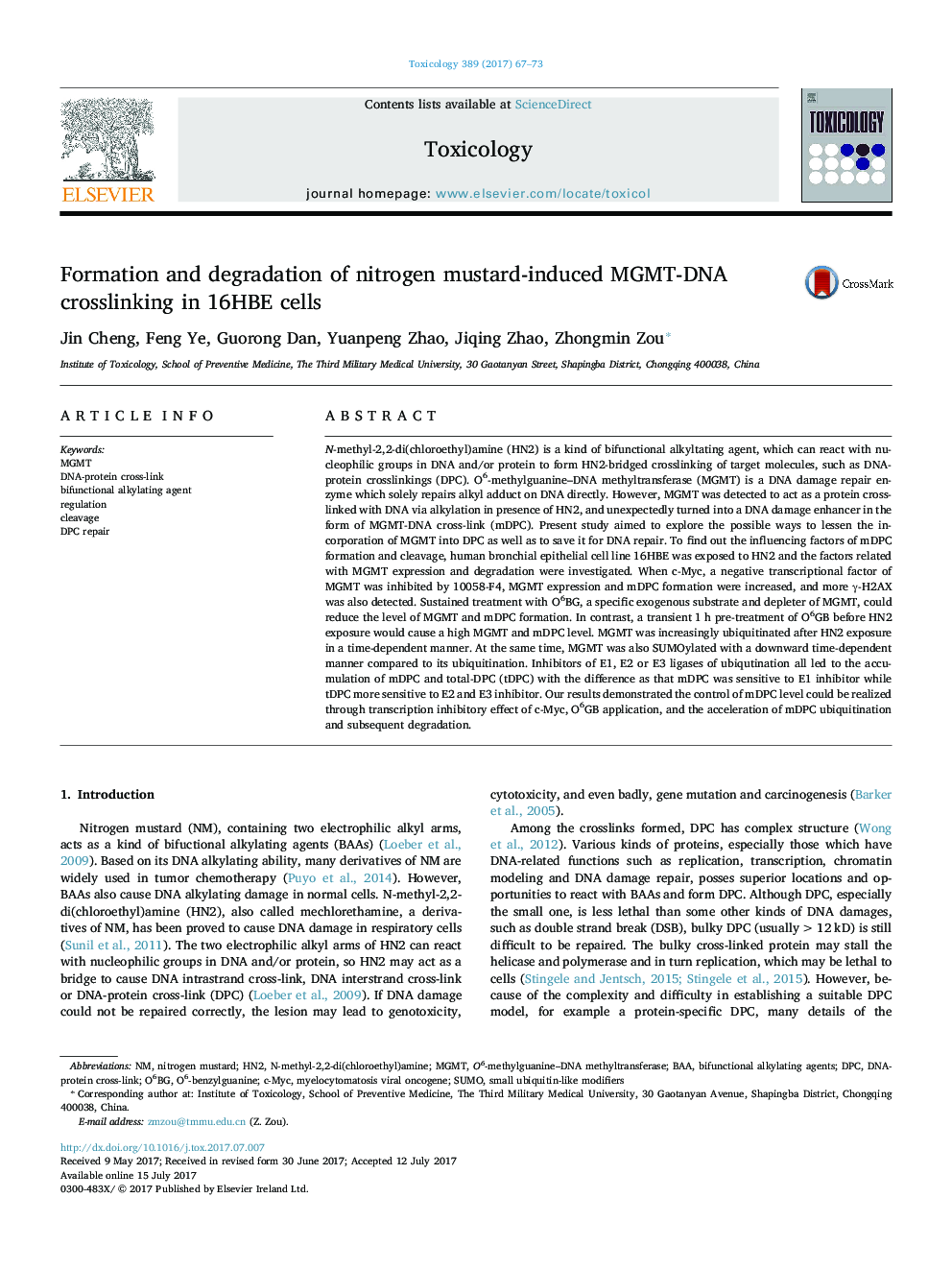| کد مقاله | کد نشریه | سال انتشار | مقاله انگلیسی | نسخه تمام متن |
|---|---|---|---|---|
| 5561725 | 1562283 | 2017 | 7 صفحه PDF | دانلود رایگان |

- HN2 induced DNA-protein cross-link in 16HBE cell.
- c-Myc inhibited MGMT expression so as to reduce MGMT-DNA cross-link formation.
- Sustained treated O6BG reduced MGMT-DNA cross-link by exhausting MGMT.
- MGMT ubiquitination directly influenced MGMT-DNA cross-link cleavage
N-methyl-2,2-di(chloroethyl)amine (HN2) is a kind of bifunctional alkyltating agent, which can react with nucleophilic groups in DNA and/or protein to form HN2-bridged crosslinking of target molecules, such as DNA-protein crosslinkings (DPC). O6-methylguanine-DNA methyltransferase (MGMT) is a DNA damage repair enzyme which solely repairs alkyl adduct on DNA directly. However, MGMT was detected to act as a protein cross-linked with DNA via alkylation in presence of HN2, and unexpectedly turned into a DNA damage enhancer in the form of MGMT-DNA cross-link (mDPC). Present study aimed to explore the possible ways to lessen the incorporation of MGMT into DPC as well as to save it for DNA repair. To find out the influencing factors of mDPC formation and cleavage, human bronchial epithelial cell line 16HBE was exposed to HN2 and the factors related with MGMT expression and degradation were investigated. When c-Myc, a negative transcriptional factor of MGMT was inhibited by 10058-F4, MGMT expression and mDPC formation were increased, and more γ-H2AX was also detected. Sustained treatment with O6BG, a specific exogenous substrate and depleter of MGMT, could reduce the level of MGMT and mDPC formation. In contrast, a transient 1 h pre-treatment of O6GB before HN2 exposure would cause a high MGMT and mDPC level. MGMT was increasingly ubiquitinated after HN2 exposure in a time-dependent manner. At the same time, MGMT was also SUMOylated with a downward time-dependent manner compared to its ubiquitination. Inhibitors of E1, E2 or E3 ligases of ubiqutination all led to the accumulation of mDPC and total-DPC (tDPC) with the difference as that mDPC was sensitive to E1 inhibitor while tDPC more sensitive to E2 and E3 inhibitor. Our results demonstrated the control of mDPC level could be realized through transcription inhibitory effect of c-Myc, O6GB application, and the acceleration of mDPC ubiquitination and subsequent degradation.
Journal: Toxicology - Volume 389, 15 August 2017, Pages 67-73